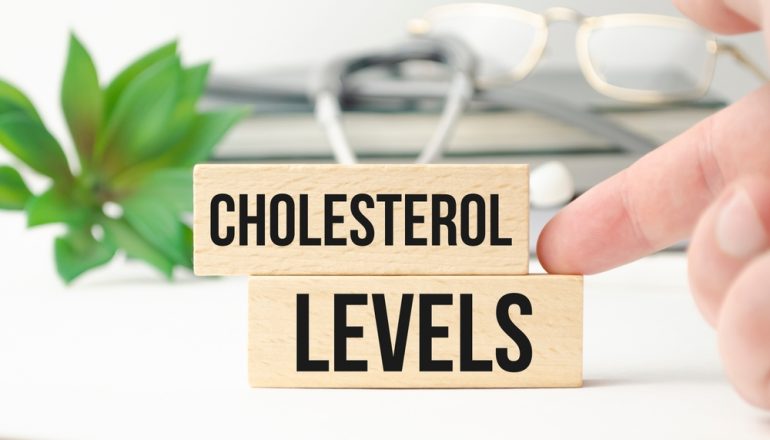Exercises to Lower Cholesterol
All types of physical activity help control cholesterol. Try for 30 minutes a day for maximum results.
High cholesterol, as most people know, is bad for your health. Cholesterol is a waxy substance made of fats and other compounds that is found in your blood. It attaches to proteins in the blood to form lipoproteins.
While there are several types of cholesterol, the three most important are high-density lipoprotein, low-density lipoprotein and triglycerides. In a cholesterol blood test, each is measured separately, and then added together to come up with your total cholesterol. Not all cholesterol is bad; in fact, the body needs cholesterol to build healthy cells. HDL, also known as “the good cholesterol,” has been shown to decrease the risk of cardiovascular disease.
But too much total cholesterol, LDL and triglycerides – known medically as your lipid profile – can cause fatty deposits to build up in your blood vessels. If these deposits grow too big, they can block blood flow. In addition, those deposits can sometime break and form a blood clot, which can causes a heart attack or stroke.
One of the best ways to control cholesterol, especially moderately high levels, is through exercise. There are many studies that show increased physical activity and exercise improve an individual’s lipid profile by increasing HDL and lowering total cholesterol, LDL and triglycerides.
According to the American Heart Association, cholesterol comes from two sources: your liver and animal-based foods. The liver, in fact, makes all the cholesterol you need. Some people generate too much of their own cholesterol, and high cholesterol can be genetically inherited.
But cholesterol also comes from animal-based foods, such as meat, poultry and full-fat dairy products. This is known as dietary cholesterol. And a poor diet and lack of exercise are very often the cause of high cholesterol. Thus, eating a healthy diet that is low in cholesterol and animal fat is one key in controlling it. (Being overweight and smoking also increase cholesterol, and both should be controlled as part of an overall healthy lifestyle.)
Exercise is the other key.
Both Aerobic and Resistance Exercise Help
“It is not entirely clear why exercise improves lipid profile, but exercise appears to increase the use of fats by skeletal muscles, enhances the clearing of triglycerides from the blood and may also increase enzymes that facilitate the increase of HDL and increase the breakdown of fat,” says Ethel M. Frese, a professor in the physical therapy program at Saint Louis University and a spokesperson for the American Physical Therapy Association.
The intensity of your exercise and the duration “exert independent effects in modifying cardiovascular and heart disease risk factors,” Frese says. In general, exercise duration exerts the greatest effect on improving HDL. Higher intensity exercise appears to have a greater impact on lowering LDL and triglycerides than moderate-intensity exercise. “A combination of higher intensity and higher volume exercise leads to improvement of HDL, LDL and triglycerides,” she says.
Both aerobic and resistance exercise have been shown to increase HDL and lower LDL and triglycerides, Frese says. The most important factor seems to be the amount of weekly exercise the person engages in. She says adults should do 150 minutes to 300 minutes per week of moderate-intensity exercise or 75 minutes to 150 minutes per week of vigorous-intensity exercise. “Moderate-intensity exercise is recommended for previously sedentary individuals to decrease their risk of cardiovascular disease,” she adds. Muscle strengthening exercises should be done two or more days per week.
Which Exercise Is Best?
The answer to which exercise is best is always, “the one you will do regularly.” Find an exercise you enjoy, and stick with it. Before you do, though, talk to your doctor before starting any new or more strenuous exercise routine.
If you are new to exercise or are starting a new routine, the Cleveland Clinic suggests the following:
- Warm up and cool down. Spend five minutes on each before and after you exercise. Simply walking in place can do the trick.
- Begin slowly. Start working out for a short amount of time – it can be as little as 10 or 15 minutes – and slowly increase.
- Build up slowly. When you feel comfortable with your time, increase by just five minutes a week, until you can exercise at least 30 minutes each day. It’s also OK to split this up into, say, three 10-minute sessions throughout the day.
- Keep it moderate. You should be working easy enough to carry on a conversation but hard enough so you are too breathless to sing comfortably.
- Set your goal. Try to achieve 150 to 300 minutes per week of moderate exercise. All it takes is 30 minutes of exercise seven days per week or 40 minutes of exercise five days per week.
With gyms and YMCAs closed because of the COVID-19 pandemic, it’s hard to take advantage of swimming pools, treadmills, elliptical machines, cycling machines and other mechanical aerobic helpers. If you are really motivated, you could purchase a home version. But if you don’t have the space, money or motivation to get one of these expensive machines, don’t worry about it. There are plenty of aerobic exercises that can help improve lipid profiles that don’t cost a thing:
- Taking a brisk walk.
- Jogging.
- Riding your bike.
- Yoga.
- Tai chi.
Likewise, resistance exercise is harder without the machines at your local gym. However, free weights, kettlebells and resistance bands are not too expensive. You can also do simple strength exercises like:
- Pushups.
- Pullups.
- Situps.
- Squats.
- Lunges.
- Planks
Another way to increase your physical activity is with recreational activities like dancing. Even doing household chores, walking your dog or climbing stairs at a faster pace or carrying heavier objects can count toward your daily goal of 30 minutes.

